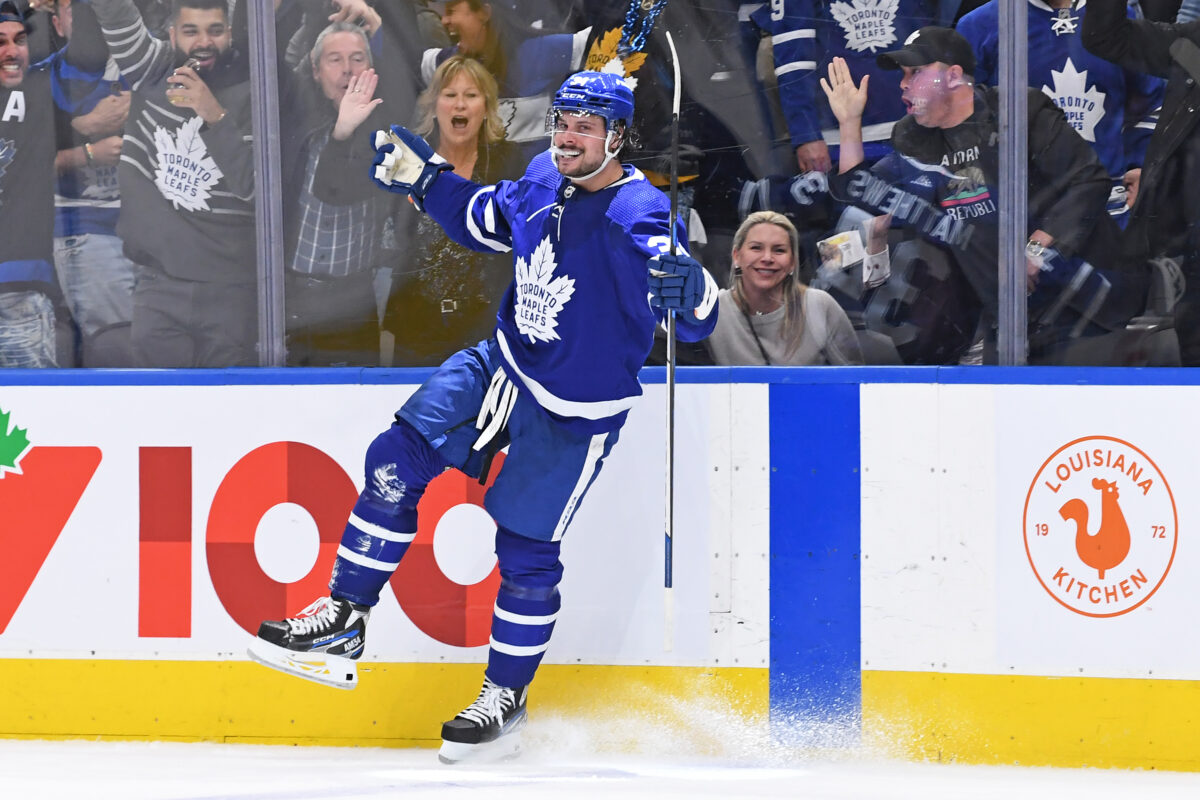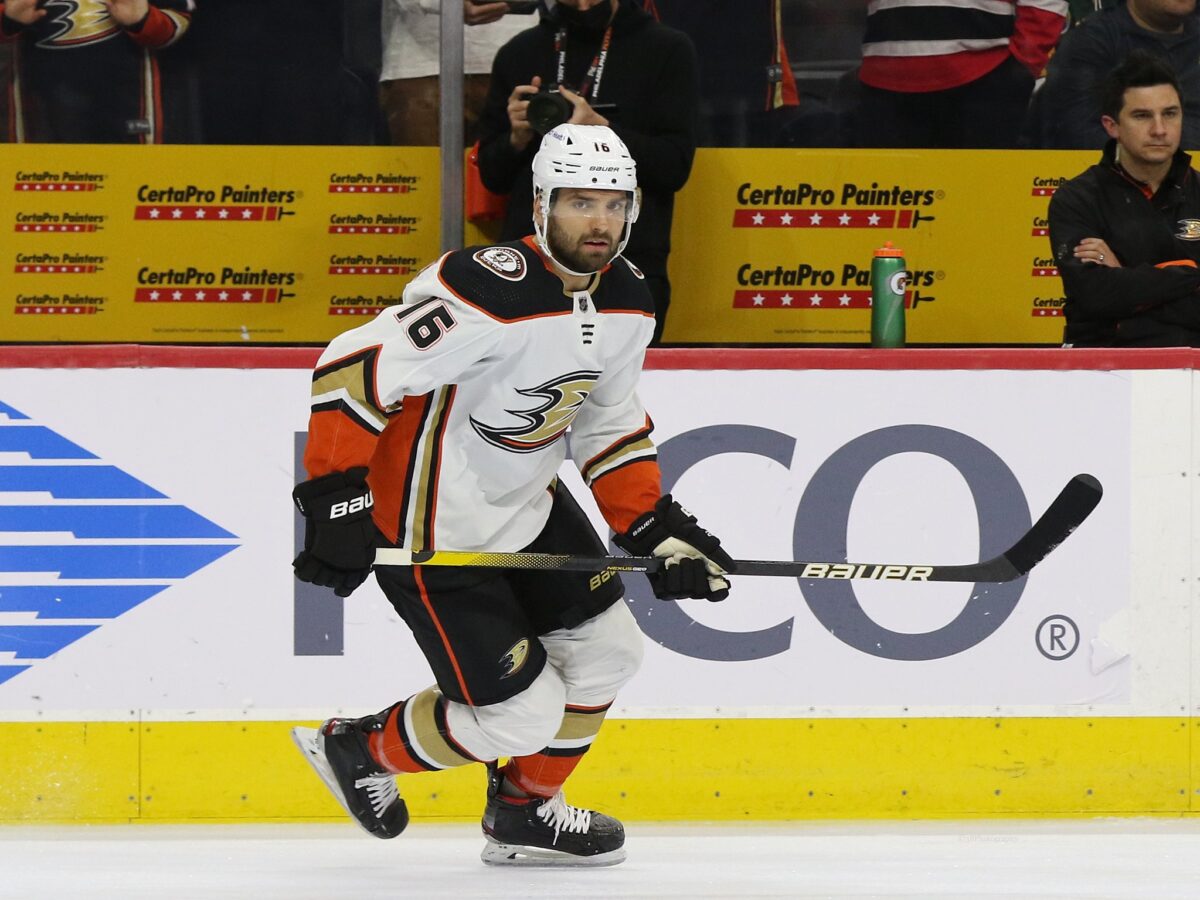For good or for ill, the Toronto Maple Leafs are where they are because the organization employed a particular logic as it shaped its current roster. In this post, I’ll look back to suggest how the Maple Leafs’ roster has been built and shaped over the past few seasons.
Obviously, there have been tweaks along the way. Specifically, the pandemic came out of nowhere to put a wrinkle into how easily the organization’s logical plan could be shaped into reality. Without fans, the NHL’s revenue stream slowed.
Related: Maple Leaf’s Commentary: The Honeymoon’s Over for Dubas & Shanahan
The resulting stagnant salary cap created a number of bumps in the road toward the organization’s plan. I’ll speak specifically to that later. However, the organization’s philosophy has stayed the same. The team has stayed that course.
Steps in the Maple Leafs Roster-Building Process
The history of building this team’s roster started with the first step of building a strong core offence. Secondarily, the organization was then built around that core.

The first step in the logical progression was to sign the team’s offensive core. First John Tavares signed. Then William Nylander, Auston Matthews, and Mitch Marner followed.
| Core Four Player | Players’ Contract AAV |
| John Tavares | $11 million |
| Auston Matthews | $11,640,250 |
| Mitch Marner | $10,903,000 |
| William Nylander | $6,962,366 |
Those high-salaried signings generated much fan critique. Obviously, it’s tough to see how such a high percentage of the salary cap could be successfully given to so few players, which the team has done. However, without the pandemic, things likely would have been much smoother. The pandemic was a hiccup.
The Pandemic Was a Huge Bump in the Road
The organization could not have known a pandemic would slow the upward growth of the salary cap. Revenues had been high and were thought to continue to rise.
Related: Pandemic Trades No Easy Task for NHL General Managers
NHL revenues stopped growing – and quickly. Prior to 2022-23, the NHL’s salary cap’s last increase was from $79.5 million in 2018-19 to $81.5 million in 2019-20. The NHL’s salary cap was bumped to $82.5 million for the 2022-23 season. That’s projected to change for the better.
Specifically, although these are forecasts only, Forbes Magazine reported that the NHL’s salary cap was projected to become: (from “SportsMoney Report: NHL Salary Cap Projected To Make $4 Million Jump For 2024-25 Season,” Carol Schram, Forbes Magazine, 27/09/2022).
| Season | Salary-Cap Projection |
| 2022-23 | $82.5 million (firm) |
| 2023-24 | $83.5 million (projected) |
| 2024-25 | $87.5 – $88 million (projected) |
| 2025-26 | approximately $92 million (projected) |
Had the pandemic not slowed the growth of the NHL’s salary cap, the Maple Leafs (and other teams as well) would not have been squeezed so tightly.
The Maple Leafs’ Top-Six Line Construction for 2022-23
What the Maple Leafs have for 2022-23 is a top-six that’s coming together. The first line seems set with Matthews, Marner, and the chippy disturber Michael Bunting.

The team’s second line of John Tavares and William Nylander is not the first line, but they are strong offensively in their own right. Both Tavares and Nylander average almost a point a game. Now, with the addition of Nick Robertson (assuming he has earned his place on the team’s second line), the second line might be fleshed out. If not Robertson, Alex Kerfoot has fit well there in the past.
Building a Shutdown Maple Leafs Third Line
Last season, general manager Kyle Dubas set to work to build the shutdown third line that his head coach Sheldon Keefe desired. David Kampf was signed and became the center of that line. It worked well. The Calle Jarnkrok signing replacing the departed Ilya Mikheyev shows that the team has held to this same logic but had to replace a part.
Related: Ranking Every Calder Trophy Winner Since 2005
The team’s third line of Kampf, Jarnkrok and Pierre Engvall will continue to be utilized following the same philosophy that worked last season. That line will be sent over the boards whenever the team has a defensive-zone start. Its job is to keep the puck out of its own net.
Constructing This Season’s Maple Leafs Fourth Line
This past offseason, the goal was to improve the team’s fourth line and give it a specific task and a personality. Two players were brought in for that role – Nicolas Aube-Kubel and Adam Gaudette. More recently, the line added Zach Aston-Reese. If the preseason is any indication, that line plays a physically tough – sometimes aggressive – brand of in-your-face hockey. Its job is to make it tough for other teams to play against.

The fourth line will crash and bang from start to finish. Given their physicality and their defensive acumen, they will likely be thrown at the opposition’s best line as a way to soften them up and give them a reason to look over their shoulders all game long.
Players Have Come and Gone, But the Logic Has Remained
From my perspective, the strength of that logic has been that other NHL players see the team as a place to sign if they want to be part of a Stanley Cup winner. I’ve regularly read that a player had a choice of teams but chose the Maple Leafs because he believed the organization was a contender.
Related: Reading Between the Lines of Kyle Dubas’ Press Conference
Obviously, the team has had to replace pieces of players who have left. As a result, building the current roster has had fits and starts. However, this season’s iteration of the Maple Leafs is as close to the team that was intended when the logic for creating a winner began several seasons ago.
Now the question remains: how will the Maple Leafs do in the postseason?